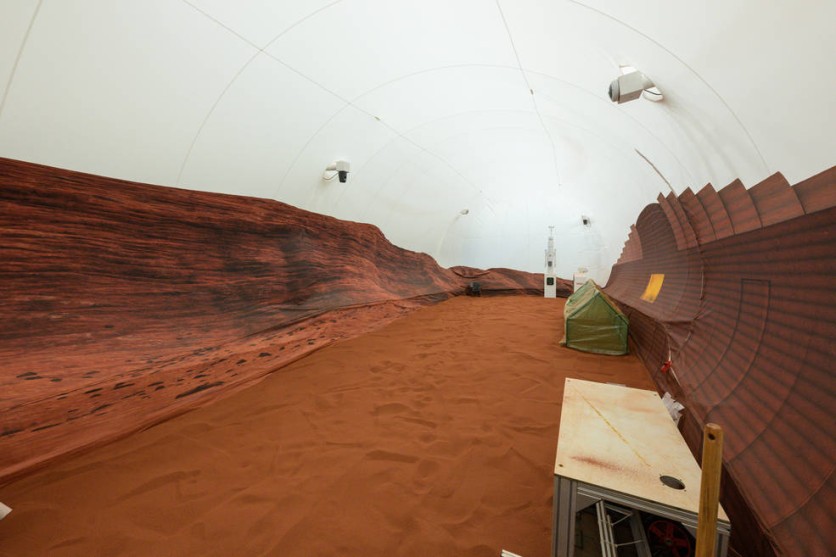Attention space enthusiasts! NASA is inviting the media to witness a historic moment on Tuesday, April 11, as the agency opens the doors to its simulated Mars habitat located at the Johnson Space Center in Houston.
This summer, a team of four adventurous volunteers will embark on a year-long mission to Mars, right here on Earth, inside the state-of-the-art ground-based habitat. This simulation will help NASA prepare for the day when humans explore Mars.
The mission, named CHAPEA or Crew Health and Performance Exploration Analog, is the first of three planned, and it is set to begin in June when the volunteer crew enters the 3D-printed habitat.

"Marswalks"
The four-person crew, selected from the general public, will carry out various types of mission activities, including simulated spacewalks or "Marswalks" outside the habitat.
Some of these walks will use virtual reality technology, providing an even more realistic experience.
The crew will also engage in robotics operations, habitat maintenance, personal hygiene, exercise, and crop growth, all while facing environmental stressors such as resource limitations, isolation, and equipment failure that could happen on Mars.
But the excitement doesn't end there! During the simulated traverses, the crew will work in pairs, conducting their activities in the "sandbox" portion of the habitat. This portion of the simulation is filled with red sand, simulating the Martian landscape.
To simulate longer traverses beyond the physical conditions of the sandbox, the crew will utilize equipment such as a treadmill for virtual reality walks.
As Mars has only a third of Earth's gravity, the mission presents unique challenges, which the crew must overcome to complete their objectives, according to NASA.
Exciting Objectives
Throughout the mission, they will have a variety of objectives. For instance, during a few of the simulated spacewalks, the crew will concentrate on field geology work, finding and identifying interesting rocks, and transmitting their special qualities to the team within the habitat so they can record them into a database.
Along with retrieving a sample from the rock and bringing it into the habitat for analysis, the crew will also capture pictures for documentation. The crew will concentrate on assessing locations for simulated construction activity during other traverses.
This year-long simulation of a Mars expedition will not only give NASA crucial data but will also mark a historic milestone for space exploration enthusiasts everywhere.
Crew members will likely be required to spend some time controlling robotic components remotely throughout this mission to boost the exploratory capabilities of future real teams on Mars.
Moon, Mars, and Beyond!
The first woman and first person of color will touch down on the Moon thanks to NASA, which is leading a return to the Moon for long-term exploration through the Artemis missions. NASA will also use cutting-edge technologies to investigate more of the lunar surface than ever before.
The knowledge gained on and around the Moon will help NASA get ready for the next big step: sending humans to Mars.
The media event offers a once-in-a-lifetime opportunity to speak with subject matter specialists, record videos, and take pictures inside the habitat.
The crew members will not be there at the occasion, but they will show up at NASA Johnson later this spring to get ready for the simulated mission.
This simulated mission is an opportunity for humanity to take one step closer to the moon, Mars, and beyond!
Related Article : Scientists Create Cosmic Concrete to Build Future Homes on Mars

ⓒ 2025 TECHTIMES.com All rights reserved. Do not reproduce without permission.




